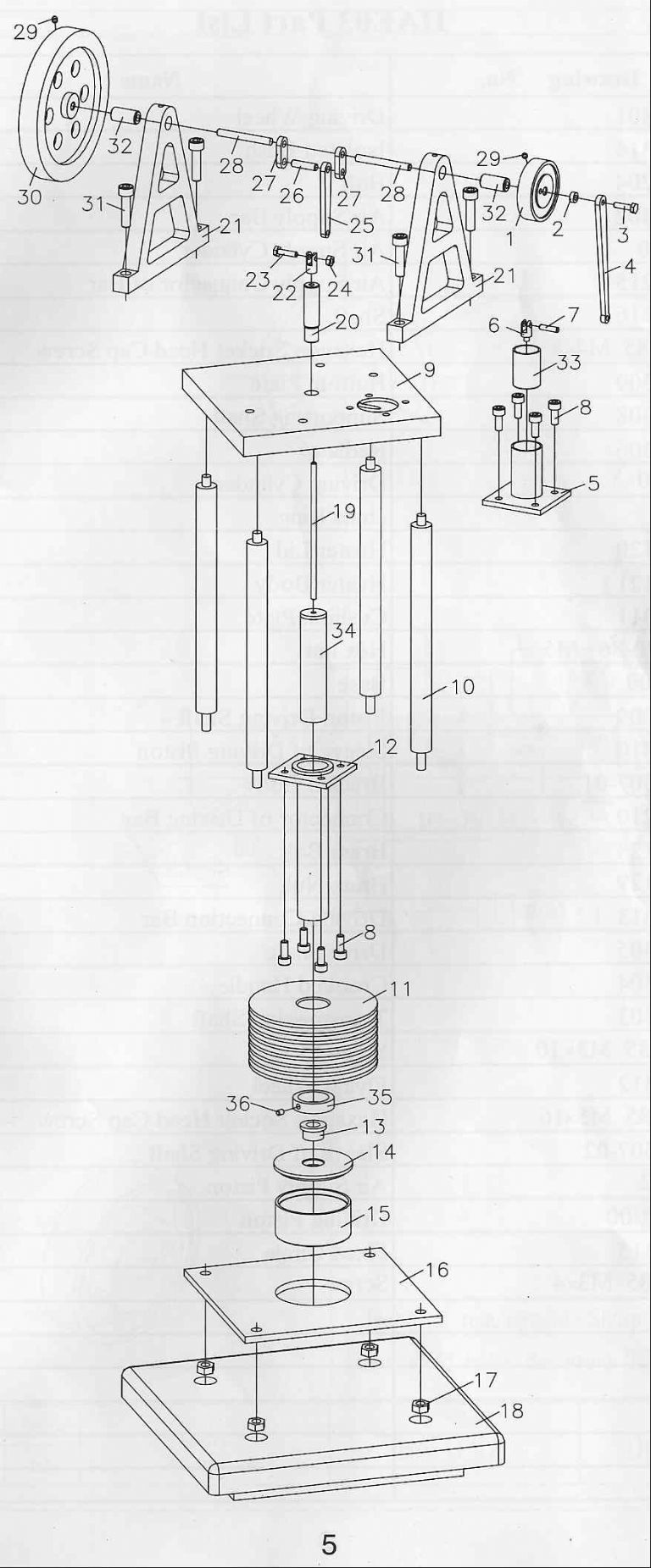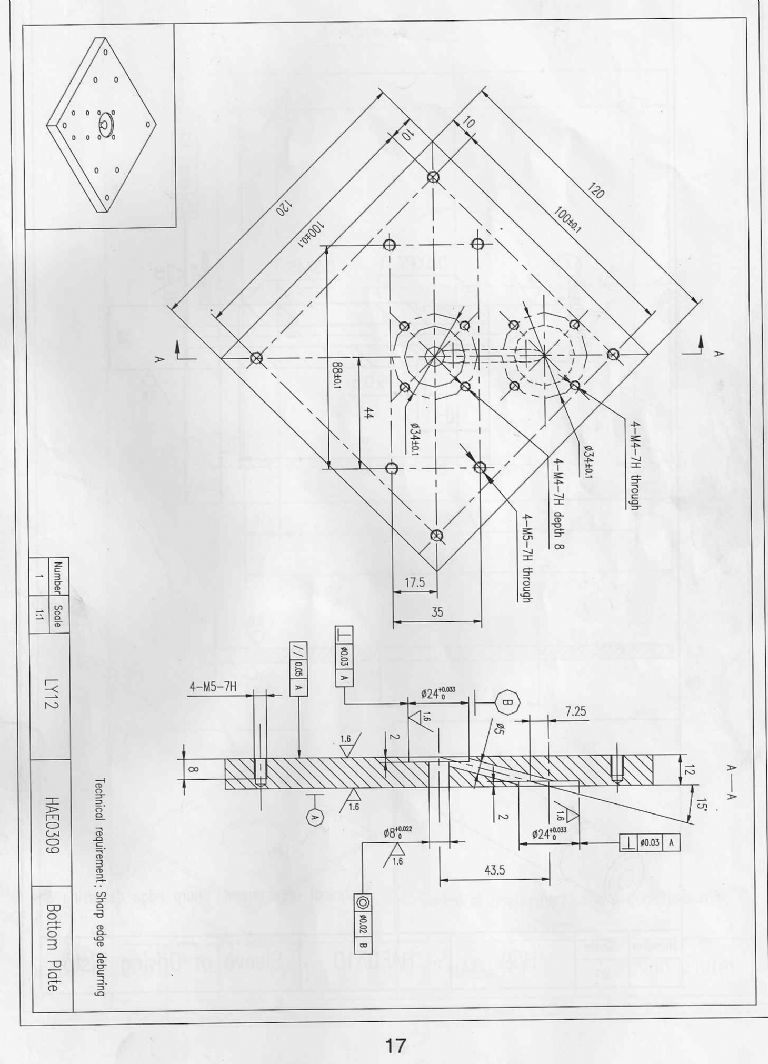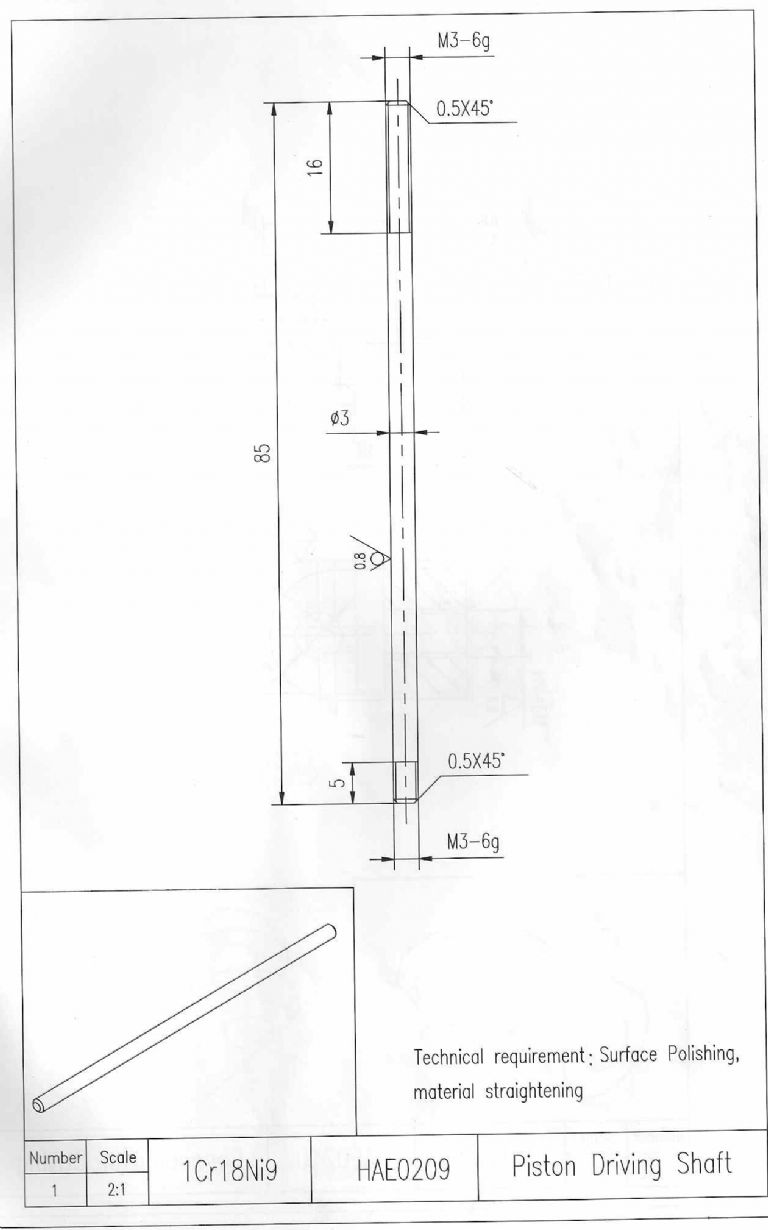Bill, I don’t bother with maths, I measure the length of the cylinder, and the length of the displacer plus stroke, the extra length of the cylinder divide by two, find a washer, bit of cardboard, or something,drop it down the hole and assemble the displacer assembly, put the forks on the rod and hook up the con rod, You should be able to turn the motor over with it just touching the spacer at the bottom. Take the cylinder off, and take the spacer out NOW, it won’t hurt if the bottom end has a few thou bigger gap than the cold end, thats where the expansion takes place.
The motor I just finished is similar to the SIEG, and GRIZZLY horizontal beam motor, it has a bore of 3/8″, and a stroke of 1/2″, The displacer cylinder is made from the steel case of a AA size NiCad battery, no plans so all mistakes are mine–wot mistakes! I really need a non contact tacho, my geared on is OK on the bigger motors, but it takes too much power with the little ones, my guess is about 2500rpm, maybe nearer 3000, its just been a bit of a design difficulty making a small enough burner. Ian S C
Sub Mandrel.











